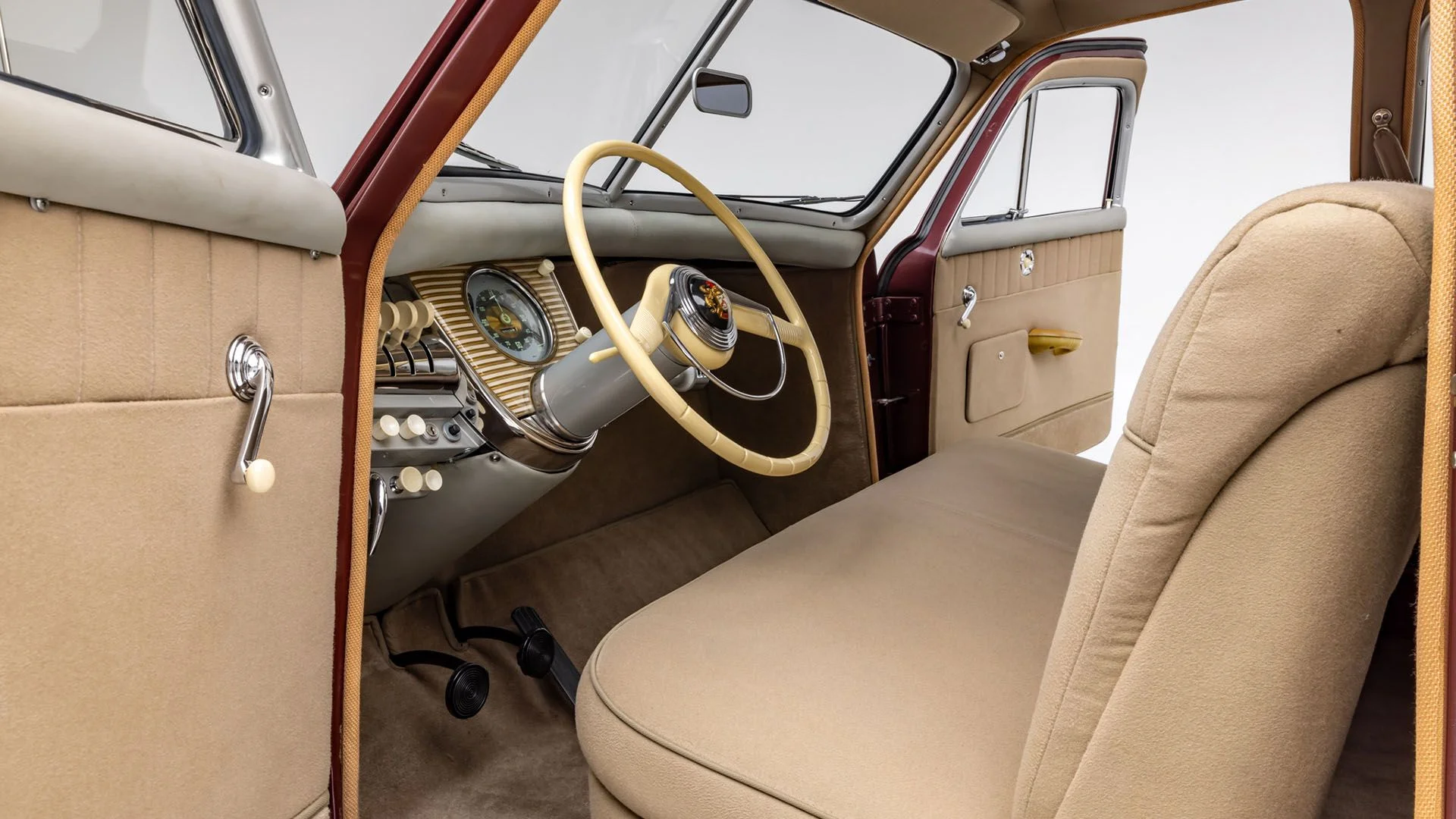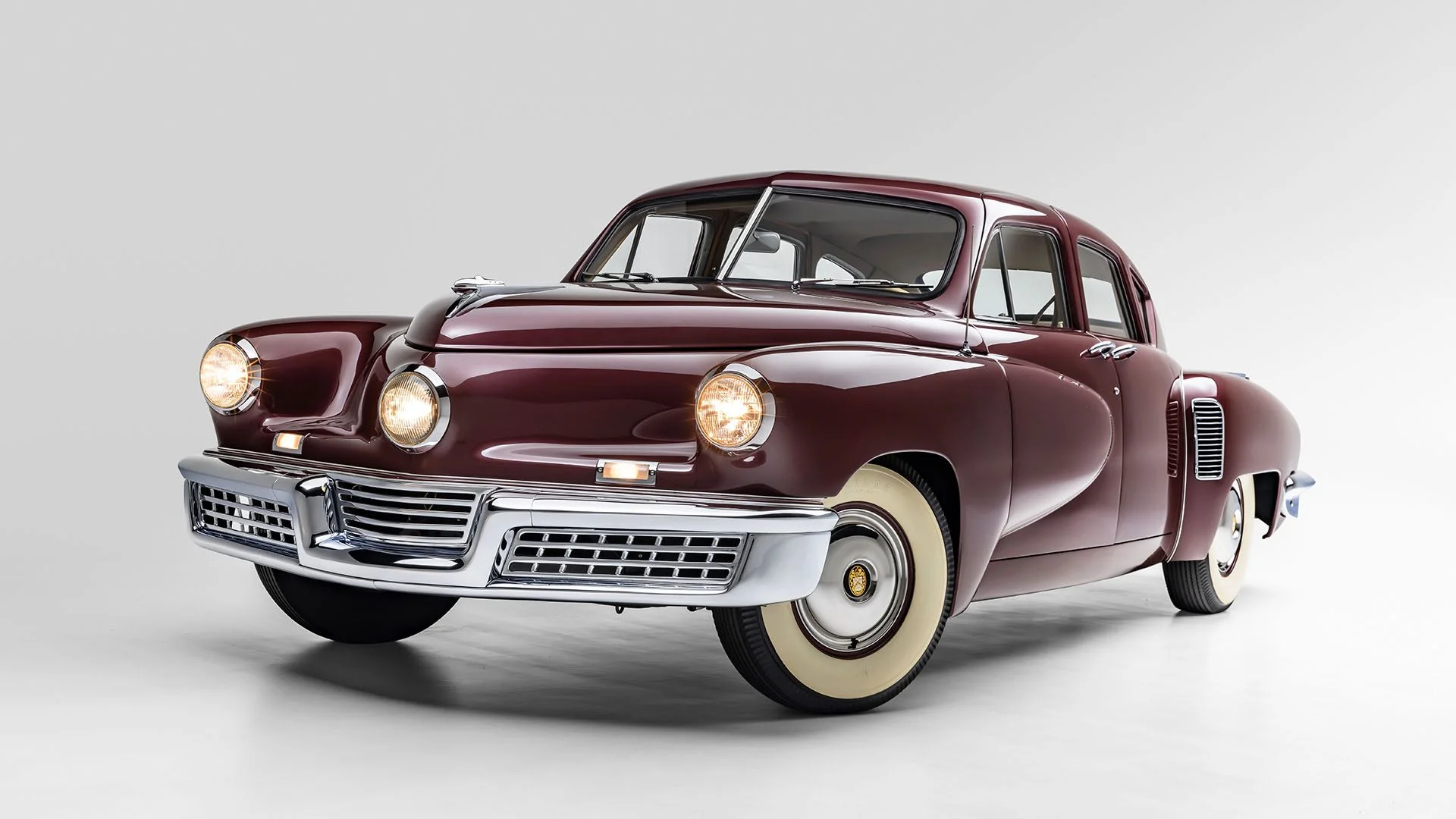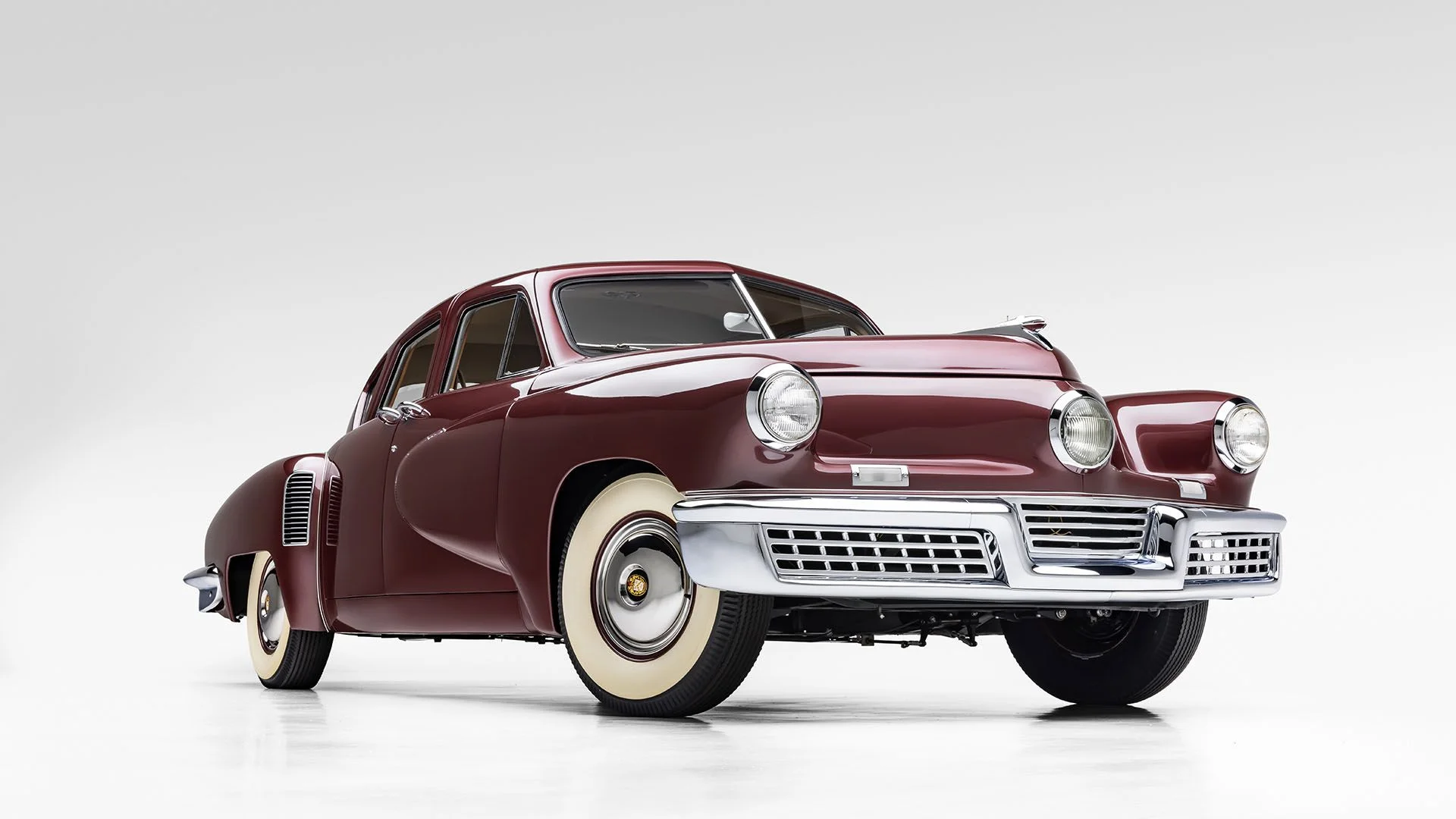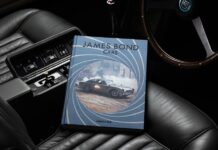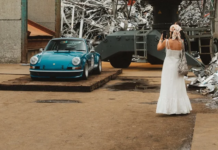The invention and century-long development of the automobile would have been altogether impossible had it not been for the aspirations of critical visionaries, mechanical geniuses, and deep-pocketed financiers. But for every success story of mass-production or technological revolution, there are countless additional tales of false-starts and heartbreak.
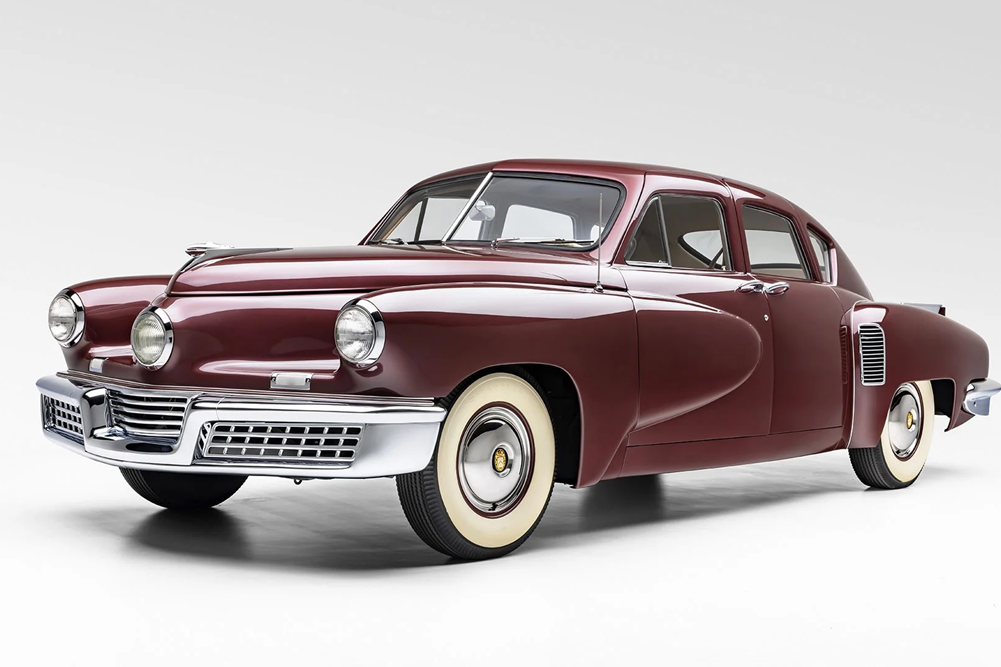
Indeed, hundreds of distinct limited-production or one-off marques existed in the United States before the Great Depression wiped most of them out, effectively leaving Americans with a handful of mass-produced brands, a smattering of luxury marques, and an auto industry controlled by the “Big Three.”
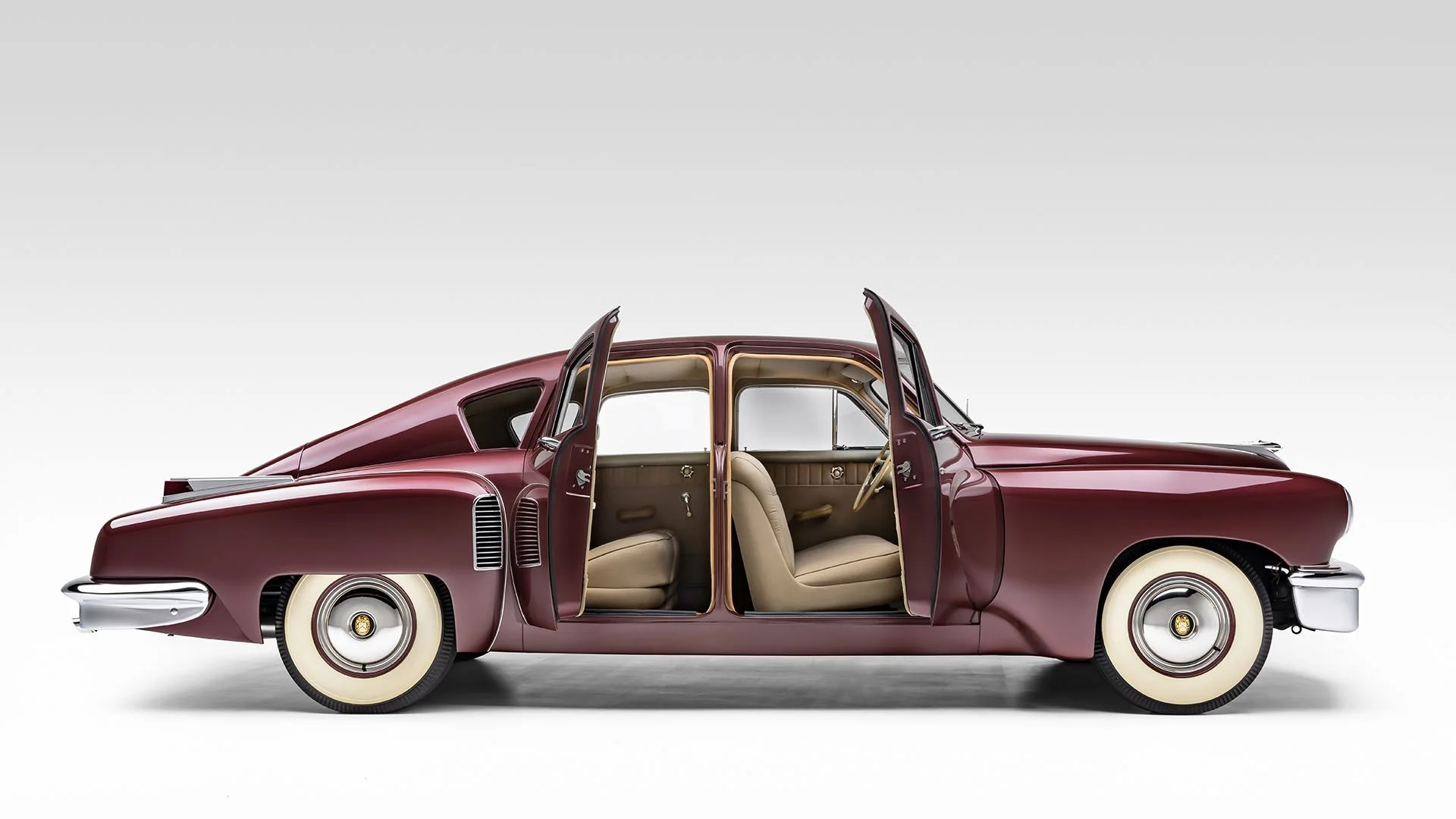
The story of Preston Tucker, however, isn’t quite that simple and the circumstances surrounding the rise and fall of his motorcar are far more extraordinary. With design and planning work going back to 1944 and the immediate post-War era, the Tucker ’48 was intended to be an American family car of many firsts with a heavy emphasis on safety – the production version boasted a frameless unibody design, pop-out safety windshield, a center “cyclops” headlight that turned with steering direction, padded dashboard, crash compartment ahead of the front passengers, integrated rollbar, push-button interior door handles, and more. Power was innovatively delivered by a rear-mounted flat six-cylinder engine with an aluminum block and heads, capable of remarkable performance. Never before had an American innovator presented a car where safety was supposed to come first and the engine was positioned at the rear.

Despite the extraordinary innovations, an enticing marketing campaign, and stunning design work that included the likes of Alex Tremulis, the story of the Tucker ’48 is sadly equally famous, if not more so, for the troubles that plagued the company and its founder than the truly innovative work that went on behind the scenes. Despite raising $17 million in an industry-leading stock IPO, Preston’s fundraising initiatives also included selling dealerships and distributorships, and starting an accessories program, through which the buyers could select from a variety of choices before the car they hoped to buy was even completed. The Securities and Exchange Commission, however, saw things differently, investigated the matter and despite being vindicated in the legal proceedings that followed, the damage done to Tucker’s reputation by the SEC, various politicians, and perhaps even the Big Three was permanent.
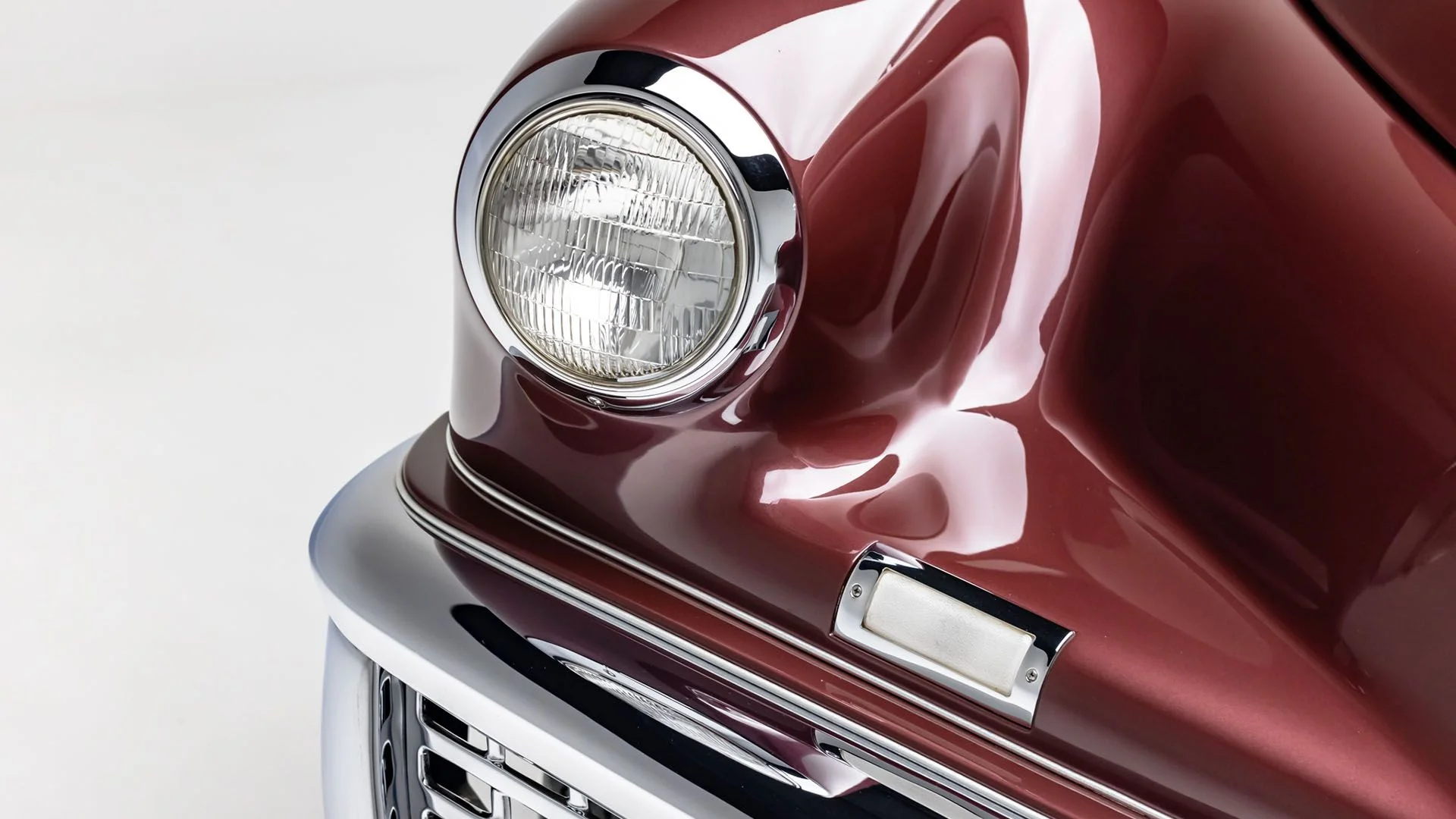
Was Preston Tucker a fraud or merely a showman and clever marketer who lost his grip on a massive concern? Were the Big Three intent on undermining the viability of his business and ensuring his failure? Opinions abound, of course, but two things are undeniable – the Tucker ’48 was one of the most innovative cars of its era and for those students of history who believe in his vision, the sheer scale of his operation and the countless proprietary innovations produced in-house by Tucker clearly suggest Preston had every intention of delivering on his promise to the American consumer.
Chassis 1003
All told, however, only 51 total cars were produced, including the first prototype (nicknamed the “Tin Goose”), which was powered by Tucker’s proprietary engine before the famous Franklin O-355 engine was introduced, otherwise used in helicopters. With only 50 production cars built hereafter in the span of about 9 months, each of which has a unique assortment of features and developmental changes, even these cars should be considered prototypes.
The car we have the pleasure of presenting here is Serial (and body) number 1003, the third numbered chassis, which was finished in “600 Royal Maroon” over a “940 Beige” interior, which was a particularly popular combination. Based on the production of its sister cars, it is believed the car was completed after March 1948 and was first mentioned in the Tucker Corporation vehicle inventory in July of that year. Indeed, much of the car’s early history can be attributed to the research of marque expert Mark Lieberman and Mike Tucker, alongside the Cammack Tucker Archives of the AACA Museum in Hershey, Pennsylvania, which confirm that the car’s original engine was numbered simply “4”, as early engines were not stamped with the “335” prefix. It is believed this was the last of four engines converted to water-cooling by Preston Tucker, Jr., Dan Leabu, and Eddie Offutt in Ypsilanti, Michigan, and it is the very same engine present in the car today.
Other features that speak to the car’s early production status are the use of a modified Cord transaxle, which 13 of the first 15 cars had. Chassis 1003 is also one of only nine cars that sits on the 128 inch wheelbase and it’s the first production car to feature the filler panel between the front bumper and body, thereby positioning the center headlight behind the front bumper. It is also the first production car to feature the production-style rear firewall, and one of very few cars with white/silver accents on the dash (as opposed to gold), and no ashtrays.
Aside from its limited production elements, there are multiple additional features that also speak to the car’s early production status – namely, the exhaust tips attached to the rear bumper, round brake and clutch pedal pads, interior window cranks, non-directional frosted turn signal lenses, Cord-style pre-selector shifter, distributor, front “rubber cushion” suspension, and front frame configuration.
By 23 July 1948 the car is listed as having been sold. Inventory documents confirm its engine number, colors, and location in Little Rock, Arkansas, presumably sold to the Arkansas Tucker Sales Corporation. By the following month, the car is known to have resided in Cincinnati, Ohio after having been sold on August 11th to Numerich Auto Sales on Gilbert Avenue. The same inventory documentation confirms the car remained unsold through the end of the year and period photography shows the car was on display briefly in September at Ray’s Auto Sales in Hillsboro, Ohio, another Tucker dealer. By March of the following year, the car was no longer listed in corporate inventory and with legal proceedings ongoing had already been sold.
The first known owner in 1950 was Art Watson of Watson Auto Auction, who displayed the car at his dealership throughout the 1950s and a photo of the car in 1957 indicates it had been refinished in a handsome two-tone finish. It is believed that Nick Jenin was the subsequent owner through the early 1960s, as 1003 joined his collection of 11 Tuckers and traveling display. By 1962, however, the car was definitively acquired and brokered by Paul Stern of Manheim, Pennsylvania, from whom it was sold to William Pettit in Virginia. Stern-drove and delivered the car to Pettit’s well-known museum, where it remained on display for over 20 years. By 1982, in fact, the car was only showing 13,391 miles and by the later part of the decade, it was acquired by none other than George Lucas, by now in need of restoration. Mr. Lucas of course executive produced the 1988 Hollywood film Tucker: The Man and His Dream, directed by Francis Ford Coppola, and this particular car joined Lucas at his Skywalker Ranch for many years, alongside one other car. In fact, Mr. Coppola himself owns two Tuckers and the two men are undoubtedly the most illustrious owners of Tuckers in recent history.
By the early 2000s, following two auction offerings, 1003 was acquired by Walter Ready, owner of another Tucker, 1046. Over the course of the next ten years, the car traded hands once more and underwent a lengthy restoration process with the results seen here today. Since that time, 1003 has resided in the distinguished motor car collection in the San Francisco Bay Area, where it has taken pride of place for the past decade.
The restoration work that 1003 was treated to included straightening and refitting of all body panels, and the restoration or crafting of any necessary interior fittings and upholstery. Chromework was addressed and the car was refinished in a shade of Maroon with most work conducted by Bata Mataja’s B.A.D. Company in Sun Valley, California. Tucker expert Martyn Donaldson conducted extensive mechanical sorting during the restoration process.
As presented today, 1003 is a lovely example of a groundbreaking and iconic American motor car. That its production history, unique outfitting, and provenance are so well known is all the more special. Tuckers are offered publicly very infrequently, and as such, the presentation of 1003, formerly owned by Bill Pettit and George Lucas, restored and presented in its original colors and with its original engine, is a particularly enticing proposition for collectors of the finest American motor cars.

